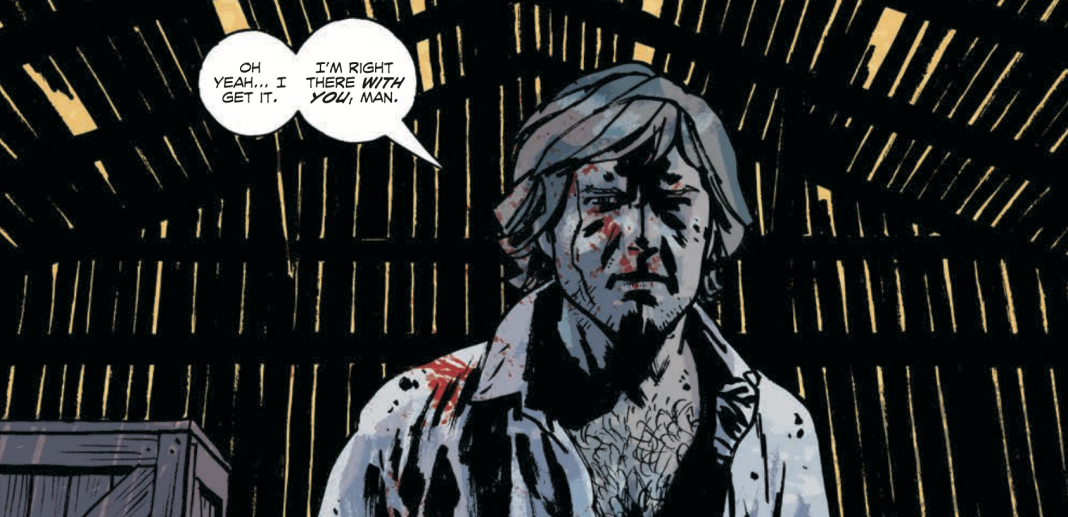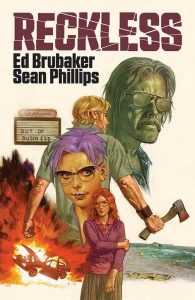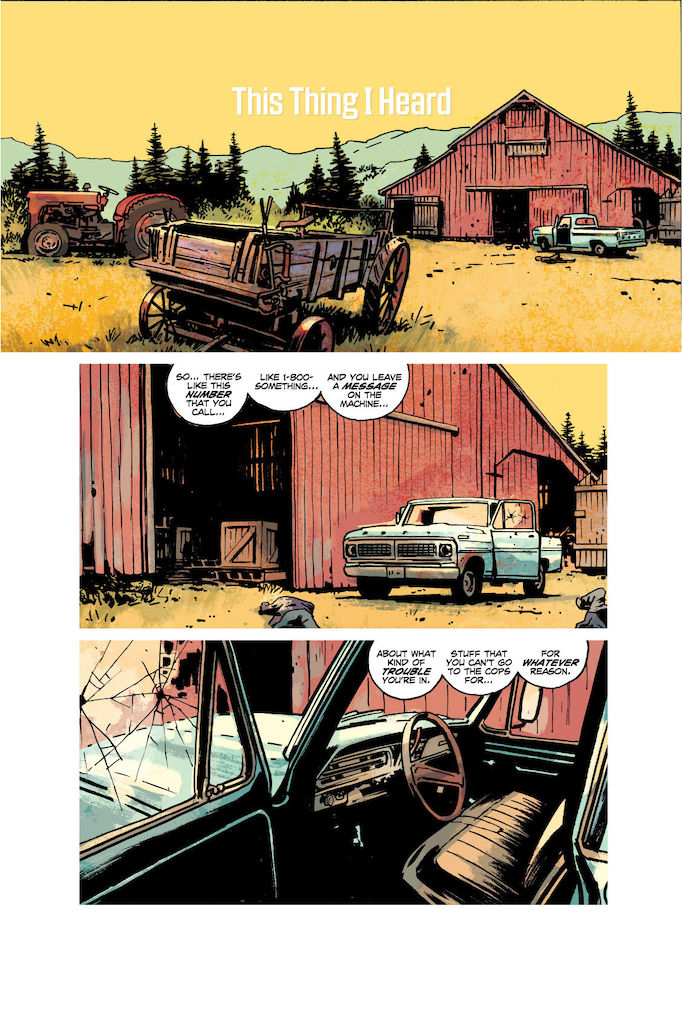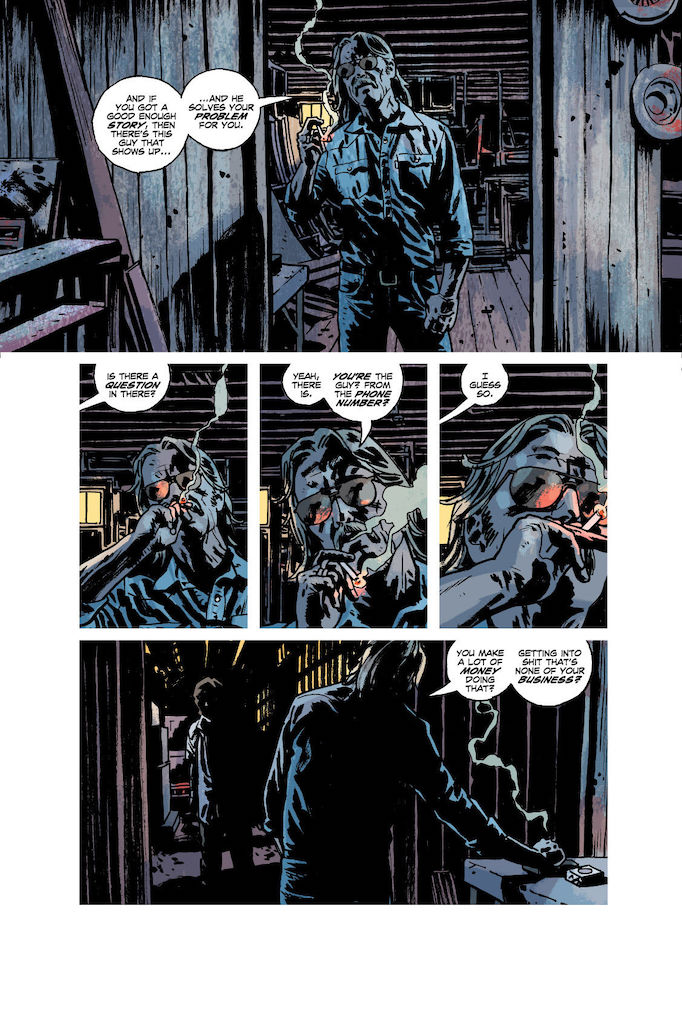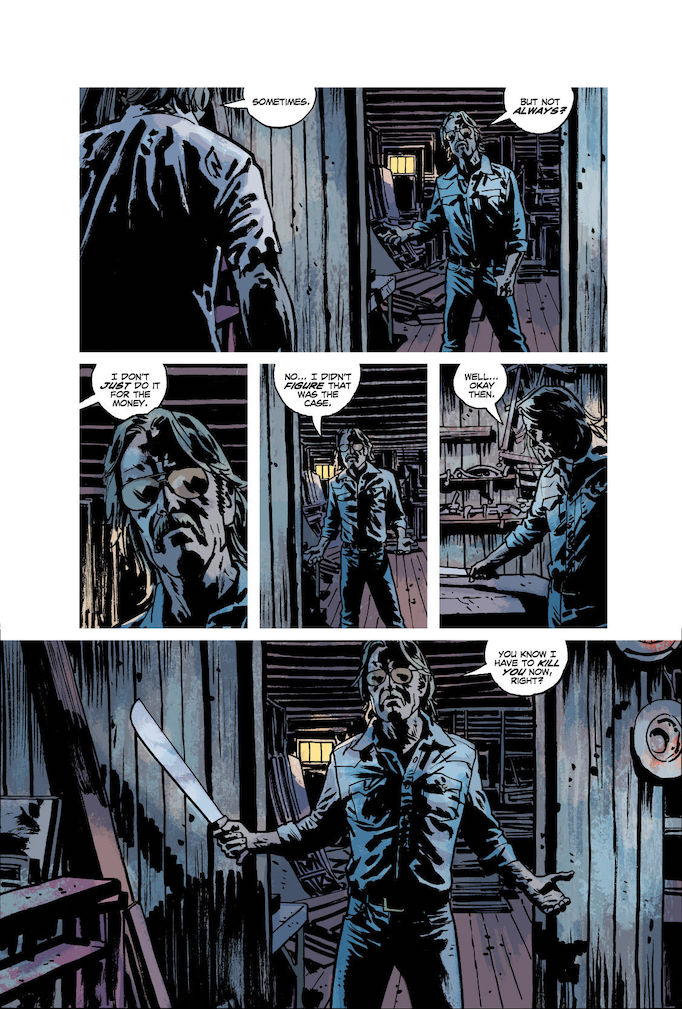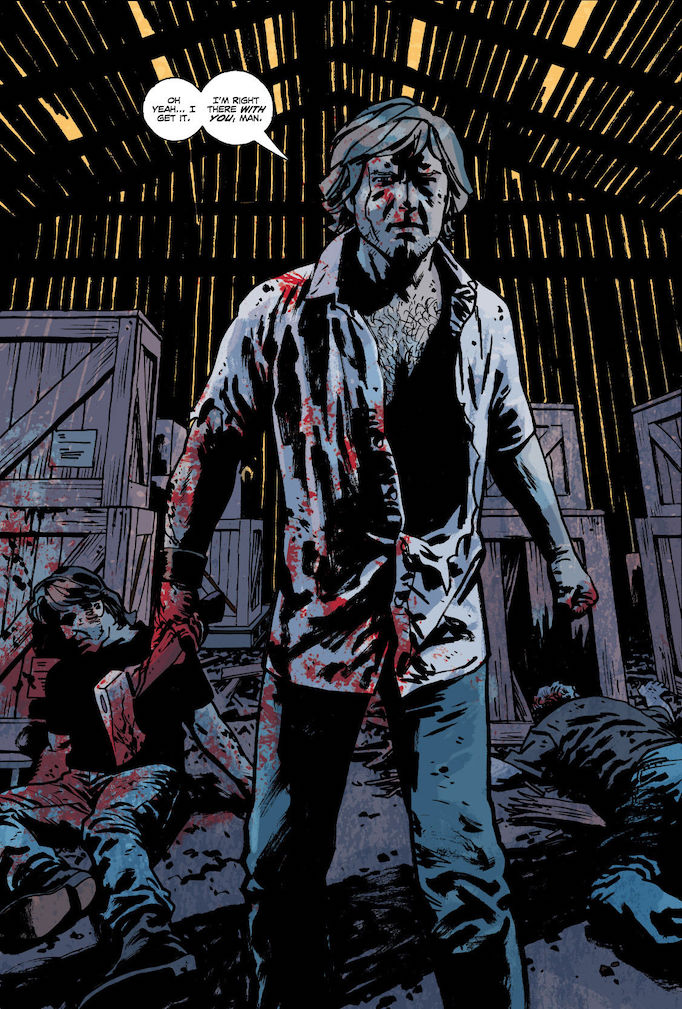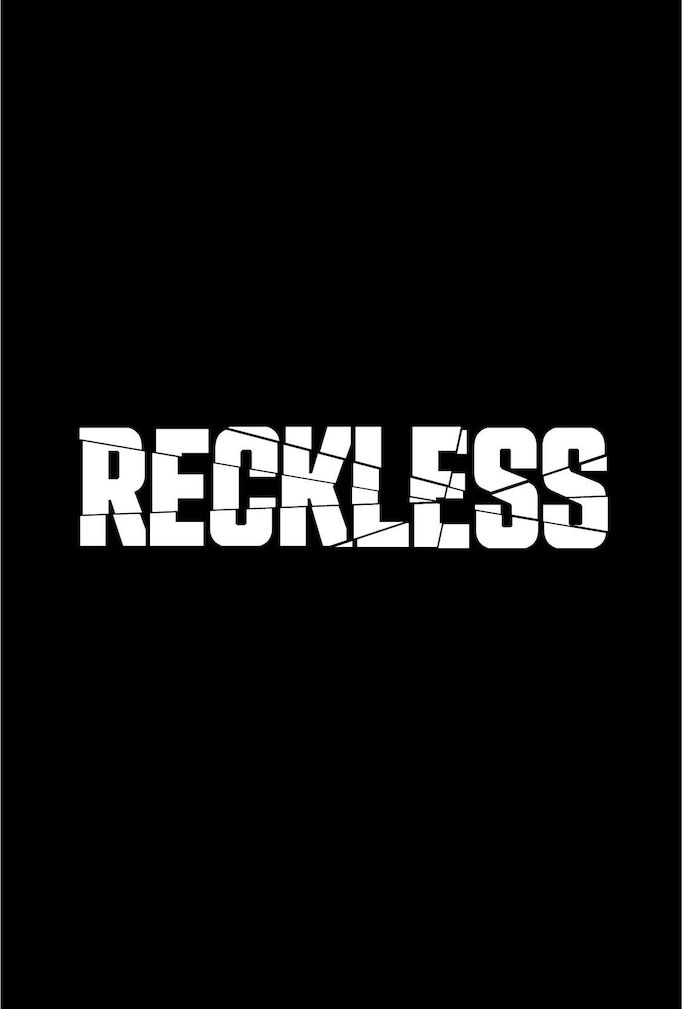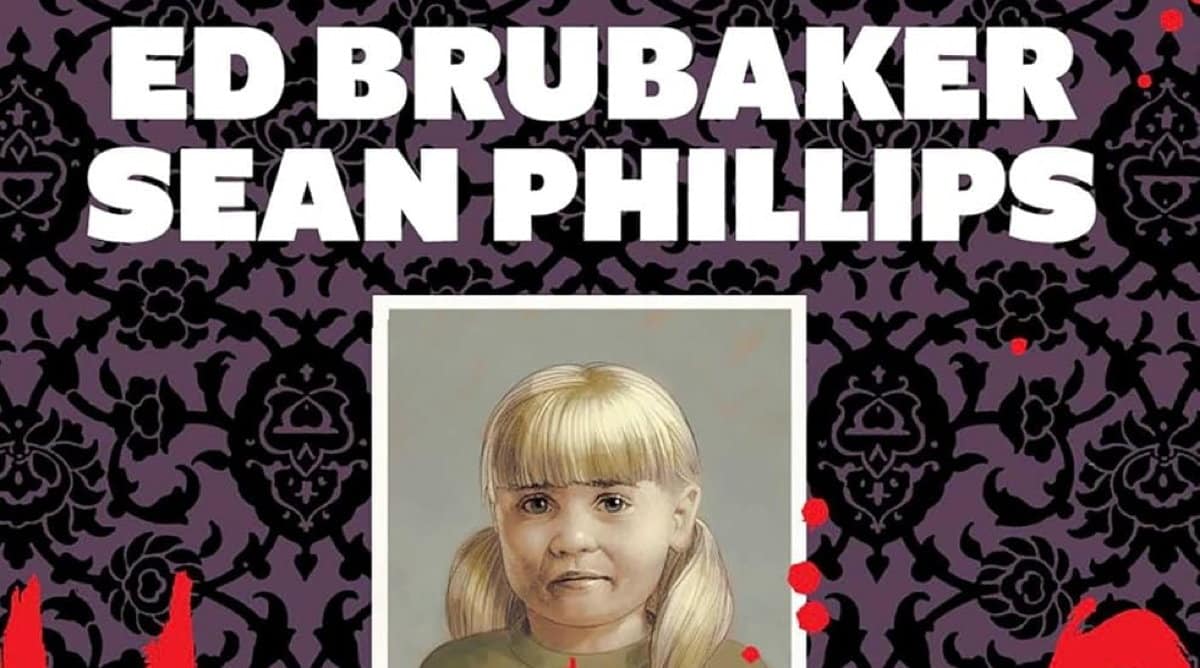Ed Brubaker and Sean Phillips have been working together for over 20 years. They’ve made comics in various genres for multiple publishers, but one thing has stayed more or less the same: the distribution model. Their books were published initially as individual comics and later collected into softcover and hardcover volumes.
The first Brubaker & Phillips work to buck that trend was My Heroes Have Always Been Junkies, and the duo was pleased with the results. They saw even greater success earlier this year with Pulp.
Now, Ed Brubaker and Sean Phillips are publishing, through Image Comics, a series of original graphic novels, the first of which releases this Wednesday. The Beat had the opportunity to interview Ed Brubaker about his and Phillips’ new OGN series, Reckless, the team’s take on the pulp hero archetype, and how the longer format changes how they make comics.
In Reckless, Ethan explains that he “fell into” helping people, never specifically setting out to do good. What appeals to you about a reluctant hero?
Well, I think it’s telling that some surf bum started getting approached by people looking for help, right? I think the way he carried himself, and that he looked like someone with military experience because of all his scars from the bomb he lived through, I think that led some people to think of him as a guy who might help them out of trouble. And I think initially Ethan does it out of a sense of justice, but also because it’s interesting to him. I don’t think he’d ever have decided to be a private eye or hang up a sign, but he has a very definite sense of right and wrong, and once that’s awakened in him, it gives him a way to escape his bleak view of the world, for a little while, at least.
I definitely think that’s part of what makes Ethan an intriguing character. He’d often rather be alone in his movie theater, keeping the rest of humanity (except for a select few) at arms length, and yet he helps his fellow man sometimes, because there’s a giant hole inside him after his college years.
Could Ethan have just as easily fallen into a life of crime, or is there something about him that makes him inherently want to do good?
I mean, arguably Ethan is a criminal. He kills and maims people, and he doesn’t pay taxes. He’s just a criminal with a sense of justice. I think his history, growing up on Naval bases in the 50s and 60s, then off to college and seeing a different side of the world, as the student protest movement became the Weather Underground… I think all of that gave him a deep sense of how much injustice there is in the world, and a kind of rage against all it is still buried inside him.
Ethan learned about the horrors of the world during his time with the Weather Underground and after getting caught in a bomb, rather than experiencing them firsthand in Vietnam. How does that give him a unique perspective on post-Vietnam War America from those who served overseas?
I’m not sure. I mean, a big part of his college years was about not wanting to get drafted and sent to Vietnam, but then he lived through so much physical trauma anyway, that he’s just damaged in a different way.
That’s a big part of why I set him up against Wilder in the first book, because Wilder is a veteran who came back from the war thinking of himself as a murderer. It damaged his sense of right and wrong. He’s a bit of a reflection of what could have happened to Ethan, or what he saw happen to a lot of his friends that weren’t as lucky as him.
You recently described writing as a reflection of the world around you. How do you think the post-Vietnam War setting mirrors life in 2020?
I think in the 70s and early 80s, the world felt very bleak and doomed. The pop culture of that era really spoke to that, and as I grew up then, I wanted to look back at those years because I can recall pretty clearly how we all felt then. Like, the Pope and the President and John Lennon were all shot in the same year, and the Cold War was still raging. It felt like the world of Road Warrior wasn’t all that far into the future sometimes. And I think that feeling has just gotten more intense since then, although there’s been moments when the pendulum has swung the other way for a while – where it felt like the world was getting better instead of worse. But right now, in the pandemic and with global warming really starting to be felt (fire season is now year-round on the west coast) and political division that’s literally gone insane, it totally feels like the late-70s or early 80s did to me, just on steroids. My generation grew up preparing for nuclear war, while this generation grows up preparing for a school shooting, but it all feels insane.
How is Reckless structured differently as an original graphic novel than if it were released in single-issue format?
It’s one long narrative that follows its own flow. If we were to have serialized it in 5 issues of comics, the pacing would be different, because I’d be trying to make sure every issue felt like its own thing while also carrying the narrative forward. And with a story like this, it’s really a mystery-thriller, intended to just be read straight through. You’d forget the clues you learn early on if you had to wait 5 months to read the ending. I have always tried to make sure our comics work as graphic novels just as well as they do as single issues, so it may not seem like an enormous difference to our readers, but knowing it would only be released as a full book really freed me up in some ways. Like I could do a four-page chapter to go off on a tangent, which I wouldn’t have done had we serialized it, probably.
What does going straight to graphic novels mean for the backmatter you’ve long included in your creator-owned comics?
There’s some behind the scenes stuff in the book, actually. An afterward and process stuff about the art and how Sean made the cover.
You must have produced hundreds of pages of backmatter over the years. Are you interested in republishing that material or do you prefer it stay exclusive to the single issues?
I think some of it will be republished in the future, but I don’t want to reveal too much yet. Let’s just say I have some fun plans I’m working on. But for much of the back matter articles, they’re all owned by the various writers that did them, so there’s logistical and legal issues to collecting it all. But I’m fine with most of it just existing as articles in the old single issues. I still hunt down old magazines for stuff sometimes, and I think that’s a fun part of being a collector that’s been lost over time. The hunt.
But I do miss putting all that stuff together, the articles and seeing Sean’s illustrations come in, so stay tuned on that front.
Do you think the comics industry as a whole is heading in the direction of original graphic novels or is your work with Sean particularly well-suited to the format?
I would never try to predict where the industry is headed or tell anyone else to follow our example, honestly. We’ve been doing comics together for 20 years and slowly built up a readership that let us know they will support original hardback books, and that they in fact prefer them. Before this, I think our audience was split up between single-issue readers and trade and hardback waiters, so putting out original graphic novels just makes sense for us, because it brings those three audiences together for something new.
I wasn’t sure if it would, but the sales of My Heroes Have Always Been Junkies and Pulp were about the same as a new first issue for us, and orders of Reckless are already beyond those two, so we’re cautiously optimistic right now.
You’ve been working with Sean throughout most of your career. How have you kept your collaborations invigorating over all these years?
We both want to do something else every year or two. Whatever we’re working on, we both seem to get to the point of “let’s do something different now” around the same time. And for us that means experimenting with how we tell the stories. It’s an evolution, really. There are things I learned how to do in Fatale that we refined while doing The Fade Out, like the way we told different stories with the pictures and the words sometimes – and that evolved into just going off on tangents in Kill or be Killed. And now in Reckless you can see we’re playing around with how we tell the story and using more splash pages in different ways.
And as we do all that, Sean is always trying new things with his art and his rendering. Like if you look at Pulp and then Reckless, you can see that at times the inking is more raw and visceral in Reckless. Looser, over tight pencils.
All creative work like this is about keeping yourselves interested, and me and Sean just got lucky that we stuck it out all these years. I don’t know what the world record is, we’ll probably never beat Groo, but I don’t think there are many teams that have done as many books as us. We’ve been at this about 20 years now, and if anything, we’re putting out more work now instead of slowing down.
The first volume of Reckless releases tomorrow, December 16. The original graphic novel and many of Ed Brubaker’s other collaborations with Sean Phillips are published by Image Comics.


